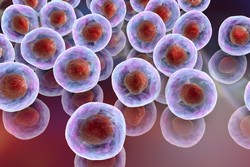Now molecules can talk using light
Molecules in living cells communicate with each other all the time, but this is difficult to replicate artificially. Researchers have not yet found a good way for artificial molecules or molecular devices to communicate in solution. The EU-funded COMMOTION (Communication between functional molecules using photocontrolled ions) initiative aimed to develop a way that molecular devices could communicate with one another in complex media. This communication should allow sophisticated molecule-based arrays to become a reality. Researchers used light on a molecule to eject ions into solution, which communicated coded information to distant molecules that emitted a light signal in response. The research group also studied in real time how the ions ejected using light travel in solution and how good they are at carrying information. Researchers were also able to observe chemical communication by viewing an ion ejected by light and being received by a molecular detector. They also designed and tested a number of these 'photoejector' molecules. The researchers harnessed a similar process called photo-induced electron transfer to activate metal catalysts. This holds promise for safer and more efficient chemical reactions for the chemical industry, and opens the door to a new type of information transfer.
Keywords
Molecules, communication, molecular devices, COMMOTION, molecule-based arrays, photoejector

